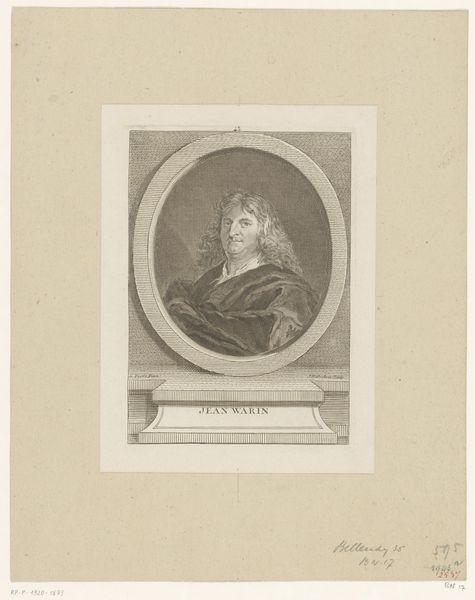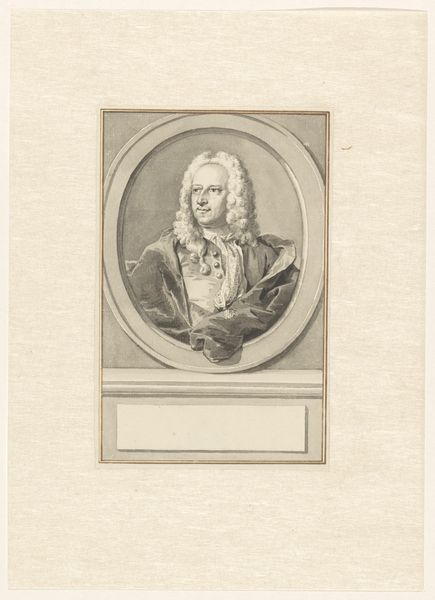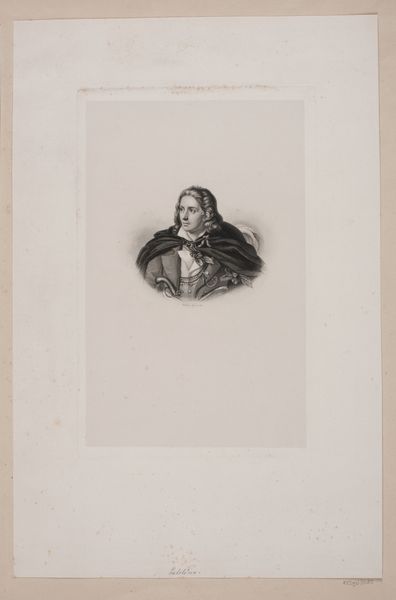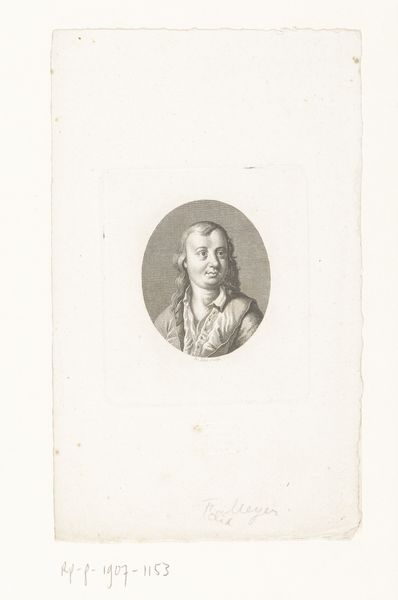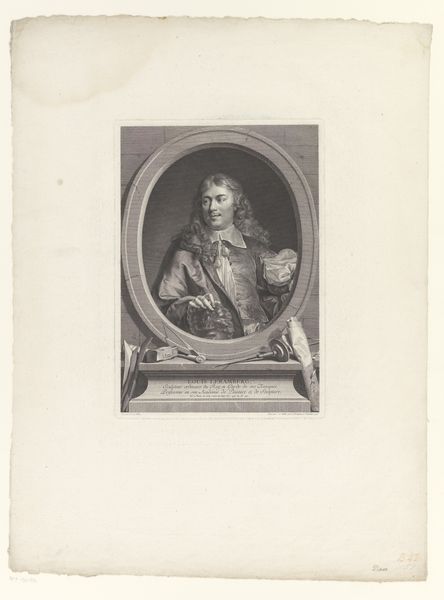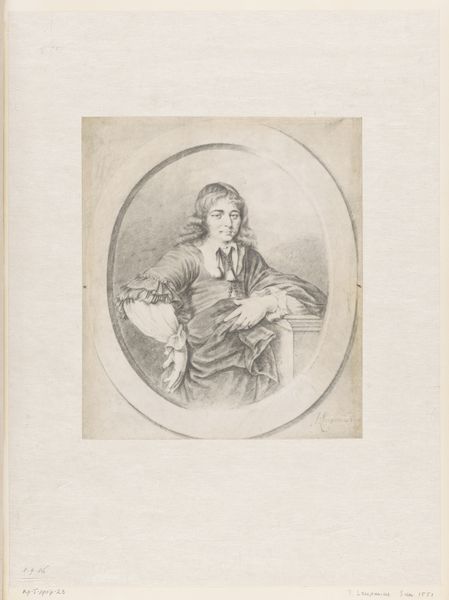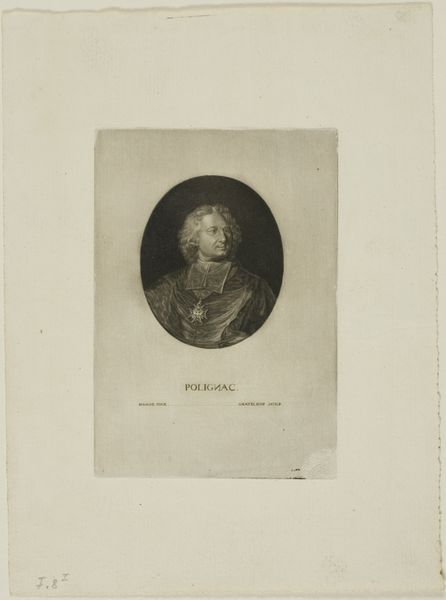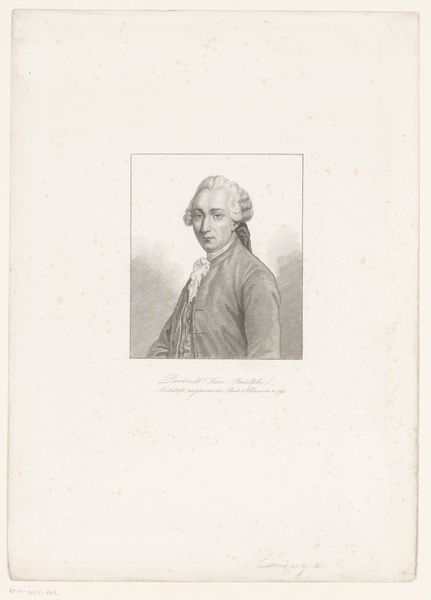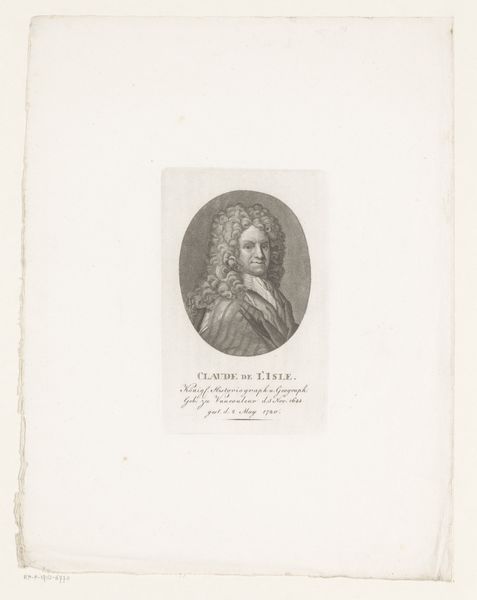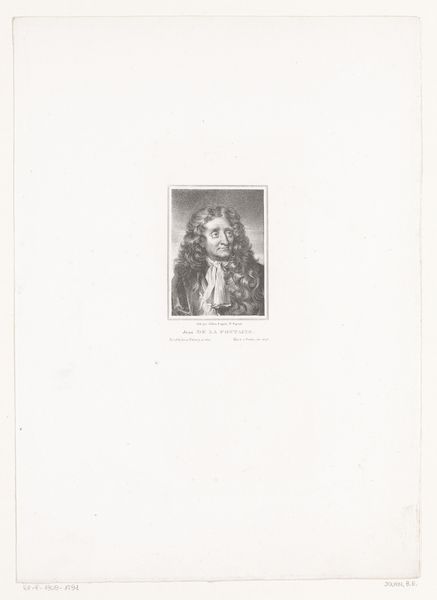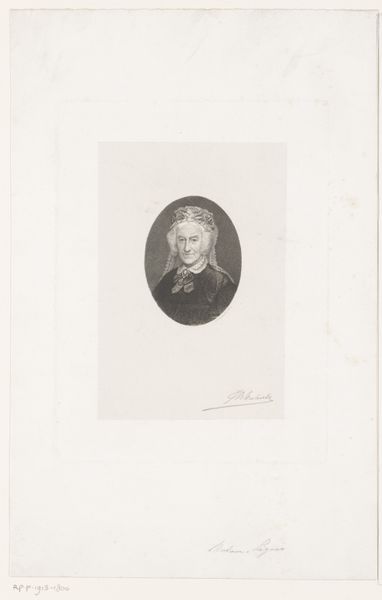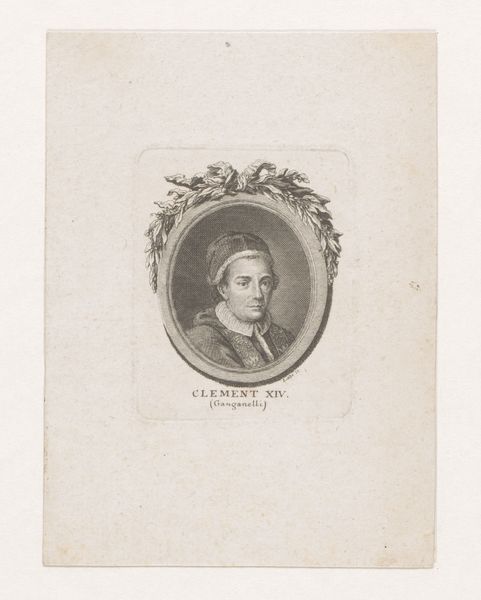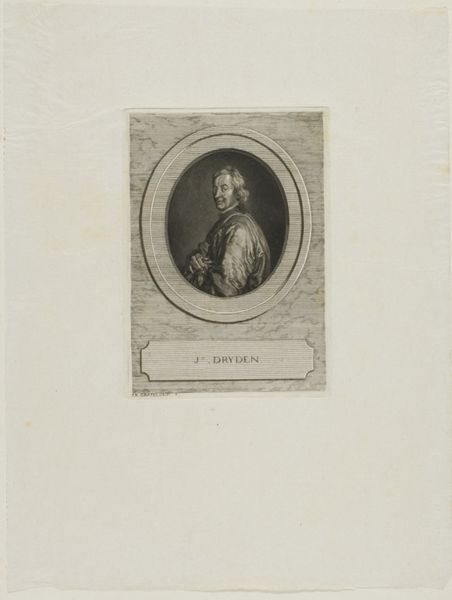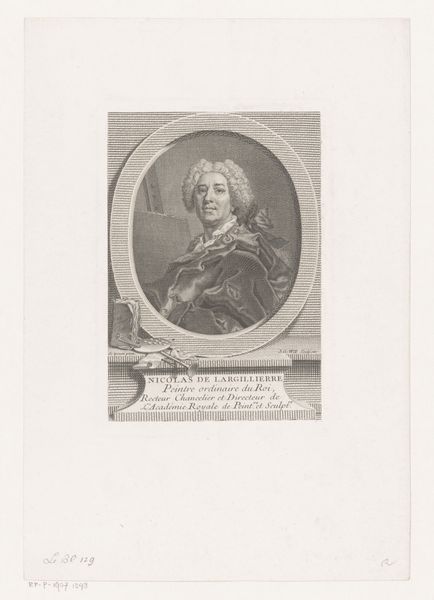
Dimensions: height 186 mm, width 159 mm
Copyright: Rijks Museum: Open Domain
Curator: This is Friedrich Wilhelm (I) Meyer's engraving, "Apostel Johannes," likely created sometime between 1780 and 1880. Editor: It has such a somber mood; his eyes seem filled with sorrow, or perhaps a deep inner contemplation. Curator: The artist masterfully employs chiaroscuro, that interplay of light and shadow, typical of Baroque portraiture, despite this likely being created closer to the late Neoclassical period. Observe how the light dramatically emphasizes the contours of his face and drapes. Editor: Yes, the light is quite strategic. But I'm also intrigued by the seemingly delicate treatment of his features in contrast with the overt symbolism of the chalice and scroll. How does John, traditionally seen as a gentle disciple, navigate the theological currents in that era? Is Meyer perhaps challenging our expectations? Curator: An interesting reading! However, the iconographic elements adhere closely to established traditions; the scroll identifying his role as author and the chalice with the serpent speaking to the legend about the attempt to poison John the Evangelist. His gaze, directed upward, reinforces that connection to divinity, essential to Baroque-era counter-reformation aesthetics. Editor: Of course, but doesn’t such intentional composition invite questions of power and authority? In that era, the printing press enabled circulation, standardizing particular stories. By choosing to perpetuate an archetype, Meyer is contributing to the socio-political project of solidifying particular readings of religious power structures. Curator: One could equally say Meyer aimed to depict inner turmoil via classical compositional structures, thus, reflecting on personal struggles toward faith that transcend overt theological impositions. Editor: Perhaps there’s space for both; seeing an attempt to solidify narrative but, possibly unintentionally, reflect on religious conviction’s effect on individual expression. Curator: A nuanced perspective. It leaves much for the audience to engage with as they explore his figure’s form and placement on the page.
Comments
No comments
Be the first to comment and join the conversation on the ultimate creative platform.
